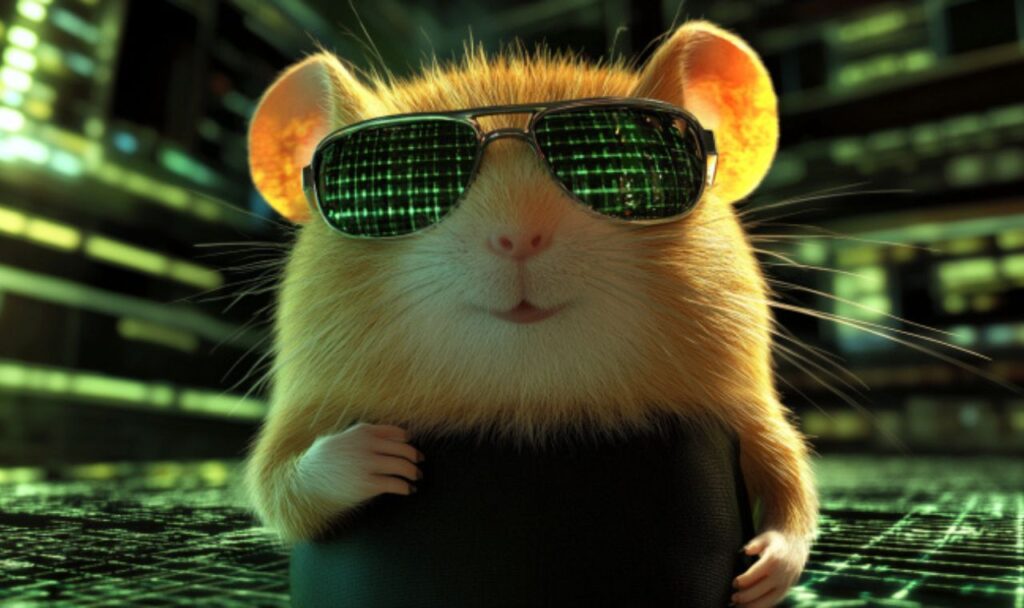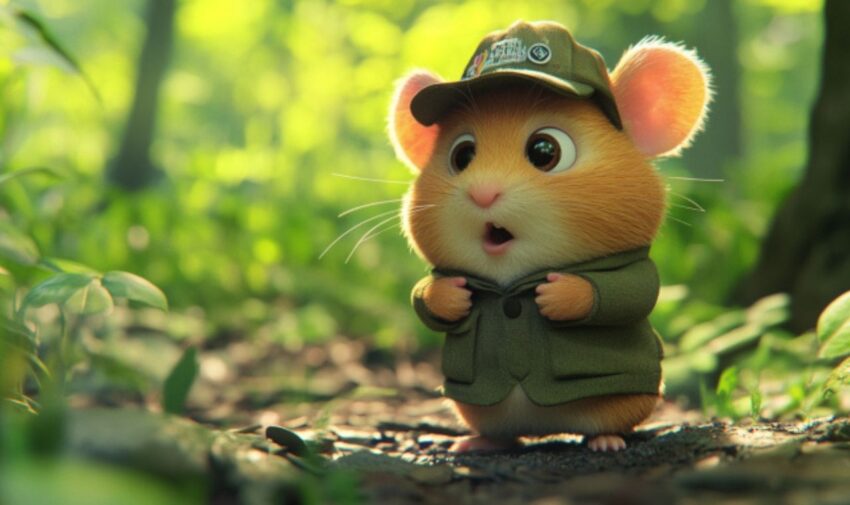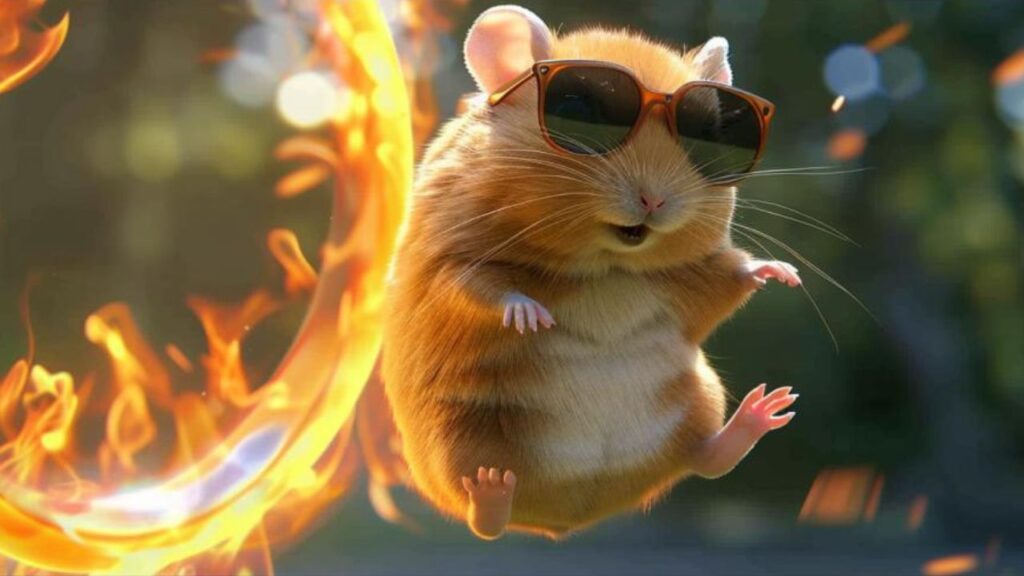Hamsters may be small, but they experience the world in fascinating and complex ways! Their survival instincts are finely tuned to their sensory abilities, which help them navigate their environment, find food, and stay safe from predators. While we humans rely heavily on sight, hamsters approach life quite differently—leaning on their sharp hearing, keen sense of smell, and even their whiskers to interact with the world around them. By diving into the unique ways hamsters perceive their surroundings, we can learn to better care for these adorable furry companions and make their lives as enriching and comfortable as possible.
In this article, we’ll take a journey through the sensory world of hamsters, breaking down how they see, hear, smell, taste, and feel. Let’s uncover what makes their sensory abilities so unique and how we can use this knowledge to create a more hamster-friendly environment.
Why Understanding the Sensory World of Hamsters Matters
Caring for a hamster isn’t just about providing food, water, and a wheel to run on. To truly thrive, hamsters need a habitat that matches their natural instincts and supports their sensory needs. For example, knowing that hamsters have poor eyesight can help you avoid making sudden changes to their cage that might confuse or stress them. Similarly, understanding their acute sense of hearing and smell can guide you in creating a quiet, stable, and scent-friendly environment.
When we understand how hamsters perceive the world, we gain insight into their behavior and learn how to respond to their needs in ways that make them feel safe and secure. It also allows us to enrich their lives with activities and toys that engage their senses, making them happier and more active.
What’s Ahead: A Peek into Hamster Senses
In this article, we’ll take a closer look at the five senses of hamsters:
- Sight: Discover why hamsters’ eyesight is their weakest sense and how they rely on other ways to navigate their world.
- Hearing: Learn about their incredible ability to pick up high-frequency sounds and how to keep their environment peaceful.
- Smell: Explore the importance of scent for survival, communication, and even bonding with their owners.
- Taste: Find out what flavors hamsters love and how to provide a healthy, tasty diet.
- Touch: Delve into the role of whiskers and paws in helping hamsters “feel” their way through life.
By the end of this journey, you’ll not only understand the sensory world of hamsters but also know how to apply this knowledge to give your little friend a fulfilling and joyful life. Ready to step into their tiny paws? Let’s get started!
The World Through Hamster Eyes

When we look at a hamster, it’s easy to assume they see the world as we do—but the truth is quite different. Hamsters’ vision is one of their weaker senses, and they rely heavily on their other sensory abilities to interpret their surroundings. Despite their limited eyesight, these tiny creatures have evolved fascinating ways to navigate their environment and stay safe. Let’s take a closer look at how hamsters see the world, from their poor vision to their reliance on whiskers and spatial memory.
How Well Can Hamsters See?
Explanation of Hamsters’ Poor Eyesight
Hamsters are not known for their keen eyesight. In fact, they have relatively poor vision compared to other animals. Hamsters are nearsighted, which means they struggle to see objects that are far away. Instead of sharp details, their view of the world is likely blurry and unfocused. This makes sense when you consider their natural habitat: wild hamsters live in burrows and underground tunnels where sight isn’t as crucial as smell, hearing, and touch.
Hamsters also have limited depth perception. Their eyes are located on the sides of their heads, which gives them a wide field of vision but reduces their ability to judge distances accurately. This is why you may notice your hamster hesitating before climbing down from a platform or a ledge—they’re unsure how far they’ll fall!
Why They Rely More on Other Senses
Because of their poor eyesight, hamsters rely more on their other senses, particularly their acute sense of hearing and extraordinary sense of smell. These senses help them detect predators, locate food, and navigate their environment with ease. Their whiskers (more on this later) also play a critical role in helping them feel their way through the dark.
Sensitivity to Light and Color Perception
Hamsters’ eyes are highly sensitive to light. They are naturally adapted to dim, low-light conditions, which mimic their crepuscular lifestyle (active during dusk and dawn). Bright lights can irritate their eyes and even cause stress, so it’s important to avoid placing your hamster’s cage in direct sunlight or under harsh lighting.
Interestingly, research suggests that hamsters can perceive some colors, particularly shades of blue and green, but they don’t see the full spectrum of colors as humans do. Their world is likely a mix of muted tones rather than a vibrant rainbow of hues.
Day vs. Night Vision
Hamsters’ Crepuscular Habits and How It Ties to Their Vision
Hamsters are crepuscular animals, meaning they are most active during the twilight hours of dawn and dusk. This behavior is an evolutionary adaptation to avoid predators that hunt during the day or night. Their vision aligns with this lifestyle, as they are better at seeing in dim light than in complete darkness or bright daylight.
How Well They See in Low Light
While hamsters’ vision is not exceptional in general, they are better suited to low-light environments. They have more rod cells in their eyes than cone cells, which helps them detect movement and shapes in dim conditions. However, even in low light, they still rely on their other senses to navigate effectively.
Practical Care Tips to Avoid Stressing Their Eyes
To cater to your hamster’s vision, avoid exposing them to bright lights or sudden flashes, as these can be overwhelming or even harmful to their sensitive eyes. Instead, keep their habitat in a dimly lit or shaded area of your home. If you use artificial lighting, opt for softer, warmer tones that won’t strain their eyesight.
Navigating Without Perfect Vision
Role of Spatial Memory and Whiskers in Compensating for Poor Sight
Despite their poor eyesight, hamsters are skilled at navigating their surroundings thanks to their spatial memory. They remember the layout of their habitat, including where their food, water, and hiding spots are located. This is why it’s crucial to avoid rearranging their cage frequently—doing so can confuse them and cause unnecessary stress.
Their whiskers (also known as vibrissae) are another tool hamsters use to “see.” These sensitive hairs detect changes in air currents and vibrations, helping them sense objects and textures in their path. You might notice your hamster exploring new areas by brushing their whiskers along surfaces, almost as if they’re mapping their environment through touch.
How They Perceive Their Environment Visually
While hamsters’ vision is blurry, they can still detect movement and shapes, especially if those objects are close to them. They use their eyes in combination with their other senses to form a complete picture of their surroundings. For example, they might see a blurry shape of food, then rely on their sense of smell to confirm it’s a tasty treat.
Why Sudden Changes to Their Cage Setup Can Confuse Them
Because hamsters rely heavily on spatial memory, sudden changes to their cage setup can throw them off. Imagine waking up one day to find all your furniture rearranged—it would be disorienting, right? That’s how your hamster feels when their habitat is altered. If you need to clean or redecorate their cage, try to keep the general layout consistent so they can find their way around easily.
The Incredible Hearing of Hamsters

If hamsters had a superpower, it would undoubtedly be their incredible sense of hearing. Their ears are finely tuned to pick up a wide range of sounds, including high-frequency noises that are completely undetectable to us humans. This heightened sense of hearing helps them stay safe in the wild and navigate their surroundings with ease. However, in the home, their sensitive ears can also make them vulnerable to stress caused by loud or sudden noises. Let’s dive into the world of hamster hearing, exploring their unique auditory abilities, the role of hearing in their survival, and how you can create a peaceful environment for your furry friend.
Hamsters’ Hearing Range
Overview of Their Ability to Detect High-Frequency Sounds
Hamsters have exceptional hearing that allows them to detect a broad range of sounds, particularly high-frequency noises. While humans can hear sounds in the range of approximately 20 Hz to 20,000 Hz, hamsters can hear frequencies well beyond that upper limit, up to 45,000 Hz or even higher. These ultrasonic frequencies are often used by other rodents for communication, so hamsters are naturally equipped to pick up on them.
This keen sense of hearing is one of the reasons hamsters often appear startled by noises we barely notice. What might seem like a subtle hum or vibration to us can sound like a blaring alarm to your hamster!
Comparison to Human Hearing
To put things into perspective, humans are relatively poor at hearing high-pitched sounds compared to hamsters. While we can enjoy the rich tones of music or distinguish voices in a crowd, we are oblivious to the high-frequency world that hamsters inhabit. This difference explains why your hamster might freeze or dash into a hiding spot at the faint sound of a squeaky door or an electronic device emitting ultrasonic noise.
Why They Might React to Noises We Can’t Hear
Hamsters’ ability to detect ultrasonic sounds makes them highly responsive to environmental noises, including ones we’re completely unaware of. For example, common household items like televisions, fluorescent lights, or even phone chargers can emit high-frequency sounds that may bother your hamster. If your pet seems jumpy or stressed, there’s a good chance they’re reacting to noises that you can’t hear!
The Role of Hearing in Survival
Evolutionary Advantages of Sharp Hearing
In the wild, hamsters’ sharp hearing is a vital survival tool. It allows them to detect predators, such as owls or snakes, long before they come into view. Their ears act as early warning systems, giving them the precious seconds they need to escape danger. This ability has been honed over generations of evolution, making hearing one of their most important senses.
How Hamsters Detect Predators or Intruders
Hamsters are highly attuned to changes in their auditory environment. A sudden rustle of leaves, a faint chirp of a bird, or the distant footsteps of a predator can trigger their natural flight response. Even in captivity, this instinct remains strong, which is why they may react strongly to unfamiliar sounds or the approach of someone they don’t recognize.
Why Loud Noises Can Cause Stress or Harm
Loud or sudden noises can be incredibly stressful for hamsters. Their sensitive ears amplify these sounds, making them feel overwhelming or even threatening. Prolonged exposure to loud noises can lead to chronic stress, which may weaken their immune system, disrupt their sleep patterns, and even affect their overall health. Sounds that seem harmless to us—such as the volume of a television or music playing in the background—can feel deafening to your tiny companion.
How to Create a Quiet Space
Tips for Reducing Noise in Your Hamster’s Environment
Creating a peaceful environment for your hamster starts with choosing the right location for their cage. Select a spot away from high-traffic areas, such as living rooms or kitchens, where noise levels are typically higher. Opt for a quieter part of your home, such as a bedroom or a calm corner of an office.
If you live in a noisy household, consider placing your hamster’s cage in a sound-dampened area or using fabric covers to muffle some of the ambient noise. Be mindful of the sounds created by household appliances, like dishwashers or washing machines, and avoid placing their cage near these machines.
The Dangers of Televisions, Stereos, and Other Human Activities
Electronic devices such as televisions, stereos, and even smartphones can emit sounds that irritate your hamster’s sensitive ears. Sudden increases in volume, like action scenes in a movie or loud music, can be particularly distressing. Similarly, the vibrations from video game systems, home theater subwoofers, or even heavy footsteps can create an unpleasant environment for your hamster.
To ensure your hamster feels safe, avoid placing their cage near these devices and keep the volume of any nearby electronics at a low level.
Recognizing Signs of Noise-Induced Stress
Hamsters communicate their stress through subtle behavioral changes, so it’s important to recognize the signs that your pet may be overwhelmed by noise. These signs include:
- Freezing: Your hamster may suddenly stop moving and stay completely still, a common response to perceived threats.
- Hiding: If your hamster retreats to their hiding spot more often than usual, noise may be the culprit.
- Aggression or Irritability: Increased biting, squeaking, or aggressive behavior may indicate stress.
- Sleep Disturbances: Hamsters need their rest, and excessive noise can disrupt their sleep, leading to crankiness or lethargy.
By monitoring your hamster’s behavior and making adjustments to their environment, you can help them feel more secure and relaxed.
Hamsters and the Power of Smell

If hamsters had a favorite sense, it would undoubtedly be their sense of smell. Their little noses are constantly twitching, taking in every scent that wafts through their environment. Hamsters rely heavily on smell for survival, communication, and even social bonding. While humans often depend on sight or sound to make sense of the world, hamsters lead with their noses. From identifying food to recognizing their owners, the power of smell plays a central role in a hamster’s life. Let’s explore how this incredible sense works and how it shapes their daily experiences.
A Nose for Survival
How Hamsters Use Their Sense of Smell to Identify Food
Hamsters’ sense of smell is their primary tool for finding food, both in the wild and in their cages. Their noses are highly sensitive and can detect even the faintest scent of a tasty treat. In the wild, they use this sense to sniff out seeds, fruits, and plants while foraging. Domesticated hamsters use the same skill to find food you’ve placed in their bowl—or hidden around their habitat as enrichment.
If you’ve ever wondered how your hamster seems to know where the best treats are hidden, it’s because their noses are on the job! This ability allows them to differentiate between safe and unsafe foods, as they instinctively avoid foods with certain smells that indicate spoilage or toxicity.
The Role of Smell in Detecting Predators and Navigating Territory
For hamsters, a strong sense of smell is also key to survival. In the wild, their noses help them detect predators like snakes, birds, and foxes from a safe distance. Even in captivity, this instinct remains hardwired, which is why unfamiliar scents in their environment can sometimes cause stress or caution.
Hamsters also use smell to navigate their surroundings. They rely on scent cues to recognize their territory and remember where food or shelter is located. This is why they prefer a stable environment—familiar smells make them feel safe and at home.
Fun Fact: Hamsters Can Smell Their Owners!
Yes, your hamster knows your scent! Hamsters have a remarkable ability to recognize their owners by smell, even if you’re wearing different clothes or coming from another room. Your unique scent helps build trust and comfort with your hamster over time. That’s why consistent handling (with clean hands, free of strong odors) is so important—it helps your hamster associate your scent with safety and positive interactions.
Scent Marking and Communication
Why Hamsters Scent-Mark Their Cages
If you’ve ever noticed your hamster rubbing their body or leaving small drops of urine in certain parts of their cage, congratulations—you’ve witnessed scent marking! Hamsters have scent glands, located on their flanks or near their hips (depending on the species), which they use to mark their territory. By leaving behind their scent, they are essentially declaring, “This is mine!”
Scent marking is a natural behavior that helps hamsters feel secure in their space. It’s their way of setting boundaries and ensuring they know where everything is in their environment.
How They Use Smells to Communicate with Other Hamsters
In the wild, scent is a powerful tool for hamster-to-hamster communication. A hamster’s scent can convey a lot of information, from marking territory to signaling reproductive status. For example, female hamsters in heat release specific pheromones to attract males, while males use scent to establish dominance over a particular area.
Even if your pet hamster is living solo, they may still engage in scent-marking behaviors as a way to maintain their personal space. If you ever house multiple hamsters (in cases where they’re a social species like dwarf hamsters), you’ll notice them interacting with each other’s scent marks to understand boundaries and status.
The Importance of Leaving Familiar Scents in Their Habitat
Hamsters are creatures of habit, and familiar smells help them feel at ease. This is why it’s important not to remove all the scents from their cage during cleaning. While it’s necessary to clean their habitat regularly, leaving a small amount of their bedding or a favorite toy unwashed ensures they still recognize their surroundings. Removing all familiar smells can cause stress, as your hamster may feel like they’ve been placed in an entirely new, unfamiliar environment.
Scent and Social Bonding
How Hamsters Recognize Other Hamsters by Smell
In the wild and in captivity, hamsters rely on smell to identify one another. Each hamster has a unique scent, almost like a fingerprint, that distinguishes them from others. This ability is crucial for social interactions, as it allows hamsters to recognize family members, potential mates, or even rivals.
In multi-hamster setups (such as with dwarf hamsters), recognizing the scent of a cage mate can help reduce aggression and foster bonding. However, introducing a new hamster to an established group requires careful monitoring, as unfamiliar smells can trigger territorial disputes.
Why New Smells Can Be Stressful for Them
Hamsters are naturally cautious animals, and new scents in their environment can be unsettling. Whether it’s the smell of a new toy, a different type of bedding, or even a new hand soap you used before handling them, unfamiliar scents may cause them to behave nervously or hide. Gradual introductions to new items or changes in their habitat can help ease this stress.
Tips for Handling Your Hamster Without Overwhelming Their Sensitive Nose
When handling your hamster, it’s important to keep their sense of smell in mind:
- Wash Your Hands: Always wash your hands before handling your hamster, especially if you’ve been cooking, using scented products, or touching other animals. Strong or unfamiliar scents can confuse or frighten them.
- Be Consistent: Consistency is key when building trust. Regular handling helps your hamster associate your scent with safety and comfort.
- Avoid Overwhelming Smells: Refrain from using heavily scented lotions or perfumes on your hands before interacting with your hamster. Their sensitive noses can easily become overwhelmed.
Taste and the Hamster Diet

When it comes to food, hamsters are surprisingly sophisticated eaters! Their sense of taste, combined with their foraging instincts, guides them toward foods that are nutritious and appealing. Like us, hamsters have their flavor preferences and enjoy certain textures, but their dietary needs are unique to their tiny, high-energy bodies. Understanding what flavors hamsters love and how their sense of taste works can help you provide a balanced, satisfying diet that keeps your little friend healthy and happy. Let’s dig into the fascinating world of hamster taste!
What Flavors Do Hamsters Enjoy?
Favorite Hamster Tastes: Sweet, Savory, and Crunchy
Hamsters naturally enjoy sweet and savory flavors, as these are often associated with energy-rich foods like fruits, seeds, and grains in their wild diet. Crunchy textures are also highly appealing because they satisfy their instinct to chew and help wear down their constantly growing teeth. This is why a hamster will excitedly nibble on crunchy treats, such as sunflower seeds, bits of carrot, or a crispy slice of apple.
While they may show enthusiasm for sugary foods, it’s important to offer these sparingly. Too much sugar can lead to obesity, diabetes (especially in species like dwarf hamsters, which are genetically predisposed), and other health issues. Instead, opt for natural, hamster-safe treats like fresh vegetables and unsweetened, dried fruits in moderation.
Why Sugary Foods Should Be Limited Despite Their Appeal
Although hamsters love sweet foods, their tiny bodies aren’t equipped to handle high amounts of sugar. Excessive sugar intake can cause weight gain and disrupt their energy levels. Over time, sugary snacks can also lead to dental problems, as sticky foods can cling to their teeth and promote decay. To keep your hamster healthy, reserve sugary treats for special occasions and focus on nutrient-rich options like leafy greens or small amounts of protein-rich treats like boiled egg.
The Relationship Between Taste and Foraging Habits
Hamsters are natural foragers, and their taste preferences reflect their wild habits. In the wild, they roam long distances to collect seeds, nuts, grains, and bits of fruit, tasting as they go to ensure their finds are safe to eat. Their varied diet in the wild means they benefit from a mix of flavors and textures, which can be replicated in captivity by offering a diverse selection of hamster-safe foods. Foraging doesn’t just satisfy their taste buds—it also keeps them mentally stimulated and physically active!
Hamster Taste vs. Human Taste
How Hamster Taste Buds Differ from Ours
Hamsters do have taste buds, but their sense of taste is not as developed as ours. They don’t experience food with the same level of complexity as humans, but they can still detect basic flavors like sweet, bitter, salty, and savory. Interestingly, their taste buds are closely tied to their survival instincts. For example, bitter flavors often signal toxic or harmful foods in nature, so hamsters are naturally cautious around bitter-tasting items.
Do They Taste Bitterness, and Why Does It Matter?
Yes, hamsters can taste bitterness, and this is an important part of their survival mechanism. If a food tastes bitter, they are likely to reject it as potentially harmful. This is why some safe foods (like broccoli) may not be immediately appealing to a hamster—they might require time to get used to the taste. If your hamster refuses a new food at first, don’t worry! Keep trying in small amounts to let them adapt to the flavor.
Common Hamster-Safe Foods That Match Their Taste Preferences
Hamsters love a variety of foods that match their natural taste preferences. Here are some great options to include in their diet:
- Sweet: Small amounts of apple, banana, or blueberries (always remove seeds).
- Savory: Hard-boiled egg pieces, mealworms, or plain tofu.
- Crunchy: Carrots, broccoli stems, or unsalted pumpkin seeds.
Always introduce new foods gradually to ensure they agree with your hamster’s sensitive digestive system.
Encouraging Natural Foraging Behavior
Tips for Hiding Treats in the Cage to Stimulate Taste and Smell
One of the best ways to engage your hamster’s sense of taste and smell is by mimicking their natural foraging behavior. Scatter a few treats around their cage or hide them in bedding, toys, or tunnels. You can even use a puzzle feeder to make them work for their snacks! This not only provides mental stimulation but also satisfies their natural instincts to sniff out and “hunt” for food.
Foraging games are a fun way to add enrichment to your hamster’s day while also offering them a variety of tastes and textures to explore.
Why Variety Is Important for Taste Enrichment
Offering a wide variety of foods is essential to keep your hamster’s diet balanced and interesting. A diet with diverse flavors and textures ensures they’re getting all the nutrients they need while also keeping mealtime exciting. Just like humans, hamsters can get bored if they eat the same thing every day. By switching up their treats and adding new foods in rotation, you’ll keep their taste buds engaged and their bodies healthy.
Foods That Mimic Their Natural Diet in the Wild
To align with a hamster’s natural diet, focus on foods that they might encounter in the wild:
- Seeds and Grains: These form the staple of a hamster’s diet, providing energy and nutrients. Look for a high-quality hamster mix that includes millet, barley, and oats.
- Fresh Vegetables: Add a small amount of broccoli, cucumber, or leafy greens like kale.
- Protein Sources: Wild hamsters often eat insects, so you can include mealworms or boiled egg for a protein boost.
Avoid processed or sugary human foods, as these do not mimic their natural diet and can harm their health.
The Tactile World: Touch and Whiskers

Hamsters live in a world where their sense of touch is just as important as their hearing and smell. Since their vision is limited, they rely on physical sensations to navigate, explore, and interact with their environment. From their incredibly sensitive whiskers to their delicate paws, touch plays a key role in their survival and comfort. Understanding how hamsters experience the world through touch can help you create a safe, enriching habitat and handle your hamster in a way that builds trust. Let’s explore the tactile world of hamsters and learn how to make their lives more comfortable and stress-free!
The Importance of Whiskers
How Hamsters Use Their Whiskers to “See” in the Dark
Hamsters are crepuscular animals, most active during the low-light hours of dawn and dusk. Since their eyesight is poor, they rely on their whiskers—also known as vibrissae—to navigate in the dark. These whiskers are incredibly sensitive, allowing hamsters to “feel” their way through their surroundings by detecting objects and air currents.
When exploring, a hamster will brush its whiskers against surfaces like walls, bedding, or toys. This gives them precise information about their environment, such as the size of a tunnel, the location of an obstacle, or even the texture of a new surface. Essentially, whiskers act as an extension of their sense of touch, helping them create a mental map of their space. Without their whiskers, navigating their environment would be much more difficult for them.
Sensitivity of Whiskers to Textures and Vibrations
Hamster whiskers are densely packed with nerve endings, making them hyper-sensitive to even the slightest changes in texture and vibrations. For example, a hamster can use its whiskers to detect the vibration of a predator’s footsteps or to sense the texture of a surface before climbing or burrowing into it. This sensitivity allows them to make quick decisions and avoid danger in the wild.
Even in captivity, you may notice your hamster brushing their whiskers against new objects or surfaces in their cage. This is their way of gathering information and ensuring their safety before moving forward.
Why Whisker Trimming Is a Big No-No
Never trim a hamster’s whiskers! While it may seem harmless, trimming their whiskers removes a critical sensory tool that they rely on to navigate and interpret their surroundings. Without whiskers, hamsters can become disoriented, stressed, and even frightened because they lose an essential way to “see” the world. Whiskers are a natural and vital part of a hamster’s anatomy—let them remain untouched so your hamster can thrive!
How Hamsters Feel Textures
The Role of Their Paws in Exploring the Environment
A hamster’s paws are just as sensitive as their whiskers and play an important role in exploring their world. Their tiny feet are packed with nerve endings that allow them to feel textures, surfaces, and stability. When a hamster is curious about a new object, you’ll often see them paw at it or scratch lightly to investigate. This tactile exploration helps them determine whether the object is safe or climbable.
Hamsters also use their paws to forage for food, dig tunnels, and build nests. Providing them with surfaces that encourage these natural behaviors is a great way to enrich their lives.
Preferred Cage Substrates for Tactile Comfort
The substrate, or bedding, in your hamster’s cage is a critical part of their tactile experience. Soft, natural materials like aspen shavings, paper-based bedding, or coconut fiber are ideal because they’re gentle on a hamster’s paws and mimic the types of textures they would encounter in the wild. These materials also allow for digging and burrowing, which are instinctive and comforting behaviors for hamsters.
Avoid using rough or sharp bedding, such as cedar or pine shavings, as these can cause irritation or injuries to their paws and skin. Additionally, avoid artificial, scented, or chemically treated substrates, which can lead to allergic reactions or respiratory problems.
Why Hard or Wire Surfaces Can Harm Their Delicate Feet
Hamsters have delicate feet that are not designed for prolonged exposure to hard or wire surfaces. Walking on wire floors or mesh can cause painful sores and infections, a condition known as “bumblefoot.” This is why it’s essential to provide a solid floor in your hamster’s cage and cover any wire platforms with soft, smooth materials like fleece or cardboard.
By prioritizing your hamster’s tactile comfort, you’ll help them avoid unnecessary pain and create an environment where they can explore and play safely.
Handling Your Hamster with Care
How to Properly Hold a Hamster to Avoid Stress
Handling your hamster is an important part of bonding, but it must be done carefully to avoid causing stress. Here’s how to hold your hamster properly:
- Let Them Get Comfortable First: Before handling your hamster, let them get used to your scent by placing your hand in their cage and letting them sniff or climb onto it.
- Scoop, Don’t Grab: Always scoop up your hamster gently using both hands, supporting their entire body. Avoid grabbing them from above, as this can mimic a predator attack and scare them.
- Stay Close to a Surface: Hamsters can be squirmy, so keep them close to a surface like a table or your lap to prevent injury in case they try to jump or wriggle away.
Hamsters are naturally cautious creatures, so be patient and let them adjust to being handled over time.
Recognizing When Your Hamster Feels Comfortable Being Touched
A comfortable hamster will show relaxed body language when being handled. Here are some signs your hamster is at ease:
- Sitting still in your hands or calmly exploring your arms.
- Not biting, squeaking, or trying to escape.
- Sniffing you or grooming themselves while being held.
If your hamster seems tense, tries to wriggle free, or nibbles at your fingers, it may not feel ready for extended handling. Always respect their boundaries and try again later.
Tips for Taming and Bonding Through Touch
Building trust with your hamster takes time and patience. Here are some tips to bond through touch:
- Start Small: Begin with short handling sessions and gradually increase the duration as your hamster grows more comfortable.
- Use Treats: Offer a small treat, like a piece of cucumber or sunflower seed, while handling your hamster to create positive associations.
- Be Consistent: Regular handling is key to taming your hamster. The more familiar they are with you, the more comfortable they’ll become.
- Speak Softly: Use a gentle voice to soothe your hamster during handling and let them know you’re not a threat.
Over time, your hamster will begin to trust you and enjoy the interaction, making handling a stress-free and rewarding experience for both of you.
Conclusion: Living in a Hamster’s World

Hamsters may be small, but their sensory world is nothing short of extraordinary. Each of their five senses—sight, hearing, smell, taste, and touch—plays a critical role in how they experience and navigate their environment. From their limited but light-sensitive eyesight to their incredible hearing, powerful sense of smell, sharp taste preferences, and highly sensitive whiskers and paws, hamsters rely on a finely tuned sensory system to survive, thrive, and communicate. By understanding these senses, we can provide better care, reduce stress, and enrich their lives in meaningful ways.
Recap of the Five Senses and How Hamsters Rely on Them
Let’s take a quick look back at what we’ve learned about hamster senses:
- Sight: Hamsters have poor eyesight and rely more on other senses to navigate. They see better in dim light and detect movement and shapes up close.
- Hearing: With their ability to detect high-frequency sounds, hamsters’ hearing is their superpower, helping them sense predators or environmental changes. However, loud or sudden noises can be stressful for them.
- Smell: A hamster’s nose is their guide to survival, helping them locate food, detect threats, and even recognize you! Their sense of smell is also key for communication and social bonding.
- Taste: Hamsters enjoy a variety of flavors, especially sweet, savory, and crunchy foods. Their foraging instincts and taste preferences can be used to encourage natural behaviors and keep mealtime exciting.
- Touch: Hamsters rely on their whiskers and paws to explore and understand their environment. Sensitive to textures and vibrations, they depend on a comfortable, safe habitat to avoid harm.
Each of these senses contributes to your hamster’s ability to live a healthy, enriched life. And the best part? You can create a home environment that supports all of these incredible sensory abilities!
Encouragement to Create a Sensory-Friendly Habitat
Your hamster’s habitat is more than just a cage—it’s their entire world. By tailoring it to their sensory needs, you can create an environment where they feel safe, engaged, and happy. Here are a few tips for building a sensory-friendly hamster home:
- Lighting: Avoid harsh, bright lights and place their cage in a dimly lit area to accommodate their light-sensitive eyes.
- Quietness: Choose a location away from noisy appliances or high-traffic areas to protect their sensitive ears from stress.
- Smell: Keep their cage clean but leave a small amount of their used bedding during cage cleaning to preserve comforting, familiar scents. Avoid using scented products around their habitat.
- Textures: Provide soft, burrow-friendly bedding and safe items to chew, like untreated wood or hay, to cater to their sense of touch and chewing instincts.
- Foraging Opportunities: Scatter treats or use puzzle feeders to let your hamster engage their natural foraging instincts, satisfying both taste and smell.
By meeting your hamster’s sensory needs, you’ll encourage natural behaviors and create an environment that feels like home.
How Understanding Their Senses Leads to a Healthier, Happier Pet
When you take the time to understand your hamster’s sensory world, you’re not just learning about them—you’re also learning how to care for them in the best possible way. Knowing that they’re easily startled by loud noises or sensitive to bright lights helps you make better choices about where to place their cage. Understanding that they use their sense of smell to recognize you can strengthen your bond with them. Recognizing the importance of touch helps you handle them more confidently and respectfully.
A hamster that feels safe, secure, and understood will be healthier and happier overall. They’ll show more natural behaviors, be more active, and develop trust in you as their owner. And isn’t that what every hamster parent wants?
So, step into your hamster’s world—one of twitching whiskers, curious paws, and twitchy noses—and see life from their perspective. It’s a small step that makes a big difference in their life.
And always remember: A happy hamster is a wheel-y happy you!




